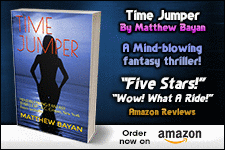Is a Picture Really Worth a Thousand Words?
- by Matthew Bayan
- Oct 22, 2017
- 3 min read
Is a Picture Really Worth a Thousand Words?
Let’s turn this equation around. Does it take a thousand words to describe a picture?
See the trap? If you’re describing, it could take a thousand words to fully portray a picture. The trick to effective writing is not to describe.
Here are the three forms that all fiction can be grouped into:
Description – You try to get the reader to experience something by telling what it looks like, smells like, feels like…you get the idea.
Summary – You skip over periods of time without putting the reader through all the details.
Immediate Scene – You show the reader what is happening with dialogue and image.
Of the three forms, summary should be the least used. Some writers use a prologue to try to explain the history and background of a setting, characters, and events. Summary is always telling. It’s no wonder that many agents will not even begin to read a manuscript that starts with a prologue. Summary should be used sparingly. Example: Over the next day, Kelly installed firewalls on all his devices. Then we pick up the action again without having gone through a software seminar.
Description brings us back to the thousand word dilemma. How much is enough to convey what someone looks like? Or a setting? Description is also telling. How do we convey the guts of something without telling?
Immediate Scene – Here is where we need to stay as much as possible. Dialogue is an example of immediate scene, unless it’s used for data dumps between characters. Avoid data dumps. But how do we replace description with immediate scene? The answer is to forget about trying to show a picture with a thousand words. Instead, replace the thousand words with image. Image is like shorthand. It’s a way to get to the emotional content of something without a thousand words. It’s a way to show, not tell.
Here’s an example I use in workshops to illustrate how using passive verbs always leads to boring description and lazy writing. Example: John was tall. We can spend a couple paragraphs describing John. Or we can use immediate scene.
Better: John bonked his head as he came through the doorway.
What does this tell us about John? He’s tall, for sure. It could also tell us that John is clumsy, or not aware of his environment. Or, if he constantly hits his head on doorways, maybe John is stupid.
Conversely, what if we say this? John ducked as he entered the room. The sentence still conveys that John is tall, but it also suggests he’s aware of his environment. Maybe earlier he hit his head coming through that doorway, but he’s learned to duck.
Even Better: Dialogue
“Hey, Stretch, how’s the weather up there?” Gary said.
Ducking through the doorway, John said, “How’s life down there in Hobbittville?”
This exchange shows that John is tall. It also shows conflict between these two characters. They might be friends and this is how they bust balls on each other, all in fun. Or they could be enemies and this is the opening round of a verbal battle. Either way, it’s a more interesting way to convey that John is tall.
The idea of using image is like the difference between poetry and prose. An inexperienced writer describing a troubled girl might spend lots of words on her tattered clothing, her face, her low esteem, etc. Or…
Twenty years ago I read a book the title of which I can’t remember. I don’t remember the author. I just remember this one line that accomplished a character sketch in one sentence: Her eyes looked like cigarette burns on a blanket. That image suggests someone who has had a tough life. It suggests a darkness within. Possibly abuse. One or two sentences after that might give an idea of her looks, but the emotional content of the opening sentence carries the weight of the image.
See the difference?
It’s much more difficult to create images and catch the reader’s emotions with a brushstroke rather than an entire picture.
Check back frequently because new blog posts appear every few days.
Please check out my latest novels. Just click on a cover below to be whisked magically to Amazon.
The late, bestselling Sci-fi legend, A.C. Crispin, called TIME JUMPER “a mindblowing fantasy thriller.”
Author and critic, David Corbett, called THE FIRECRACKER KING "a wicked, marvelous book."
Caroline Leavitt, New York Times #1 bestseller, said, "I loved it!"













Comments